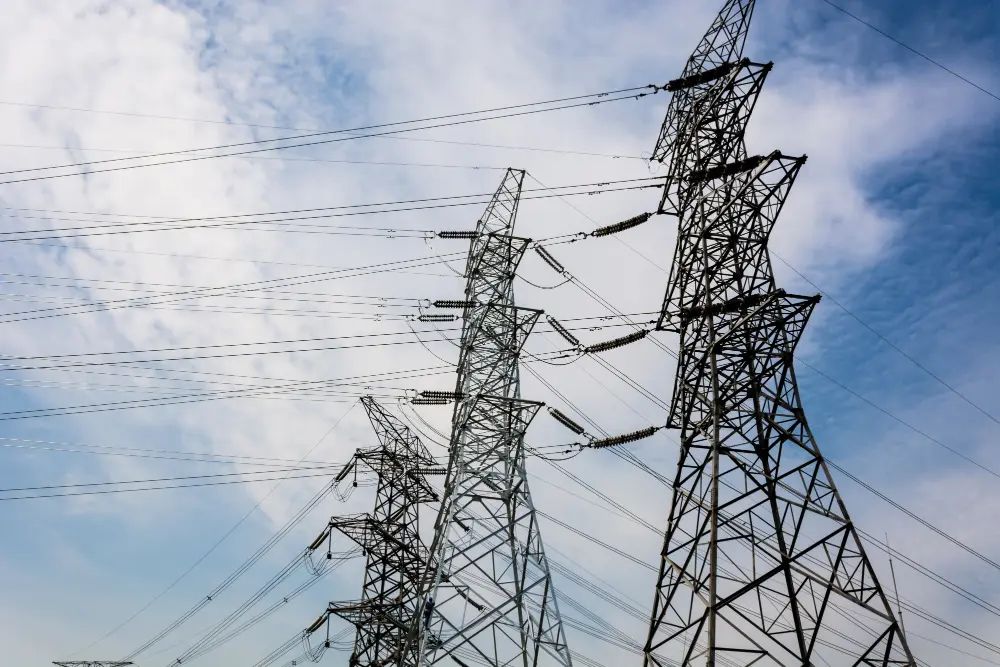•
July 11, 2025

Sand Technologies
The electric grid, the unsung hero of modern life, is facing a perfect storm of new pressures that will place unprecedented demand on the aging electric infrastructure, posing a risk to power network stability. With the growing demand for power supply, the reduction of fossil fuels comes into question. This risk has caught the attention of the government, which is now prioritizing grid resiliency. While a complete break from fossil fuels isn’t immediately feasible, a powerful new tool can help manage energy supply and demand. Artificial Intelligence (AI) can unlock smarter ways to optimize grid performance, seamlessly integrate renewable energy sources and build a more robust and efficient power system for the future.
Several trends are contributing to the unprecedented demand for electricity, which will collectively put the grid under pressure. After years of relatively flat growth, power consumption is on a sharp upward trajectory, straining existing infrastructure and compelling a rapid expansion of energy resources. Three trends, in particular, are fueling escalating demand: the proliferation of artificial intelligence and data centers, the onshoring of manufacturing and the electrification of transportation.
Together, these factors are creating a formidable challenge for utility planners and grid operators, necessitating management strategies to ensure a reliable and affordable electricity supply for the nation’s future. As a result, the U.S. government is responding to prevent widespread blackout events.
In April, the President prioritized strengthening the reliability and security of the U.S. power grid through an executive order. In response, the Department of Energy (DOE) released a report on July 7, 2025, outlining a new methodology to identify at-risk regions and guide federal interventions.
The report highlights several key issues:
According to the DOE’s findings, of the 209,000 MW in planned generation additions by 2030, only 22,000 MW comes from dispatchable resources. Meanwhile, the fossil generation scheduled for retirement exceeds 104,000 MW. Without a dependable baseload or firm capacity, the system faces a reliability challenge, becoming increasingly vulnerable to weather variability, price volatility, and resource intermittency.
The question is not whether to integrate more alternative energy sources like wind and solar—it’s how to do it without sacrificing reliability.
The DOE’s recent report on evaluating grid reliability made clear what many in the power sector have long feared: that the rapid retirement of fossil fuel generation, particularly coal, is creating a reliability gap, a potential crisis on the American grid. The report states that blackouts will potentially increase 100-fold by 2030, and only a fraction of the planned new generation will be truly reliable. The need for immediate and intelligent intervention has never been greater.
Yet while the physical grid may be strained, the digital grid—powered by artificial intelligence—holds the key to bridging the widening gap between fossil generation and renewables, supporting a smarter, more secure energy transition.
AI-driven grid management solutions are the new backbone for the modern grid, serving as a strategic reliability layer to supplement physical generation shortfalls and maximize the value of existing assets. Here’s how it works:
While the DOE report rightly raises concerns about the pace of coal retirements and the overreliance on non-dispatchable generation, the solution requires a broader perspective. Managing energy will be as crucial to the future of energy as the source of energy generated.
AI is not a silver bullet. It is a critical tool in the toolbox and represents a smart path forward. It can buy time, improve flexibility and unlock new pathways to a reliable, low-carbon grid. Policymakers, utilities and industry leaders must act now to deploy AI-driven solutions at scale, before reliability risks escalate into national crises.
Historically, the United States has held a leadership position in energy innovation. With the right investment in AI and digital grid intelligence, we can lead once again—this time, without sacrificing reliability, competitiveness, or national security.
Other articles that may interest you